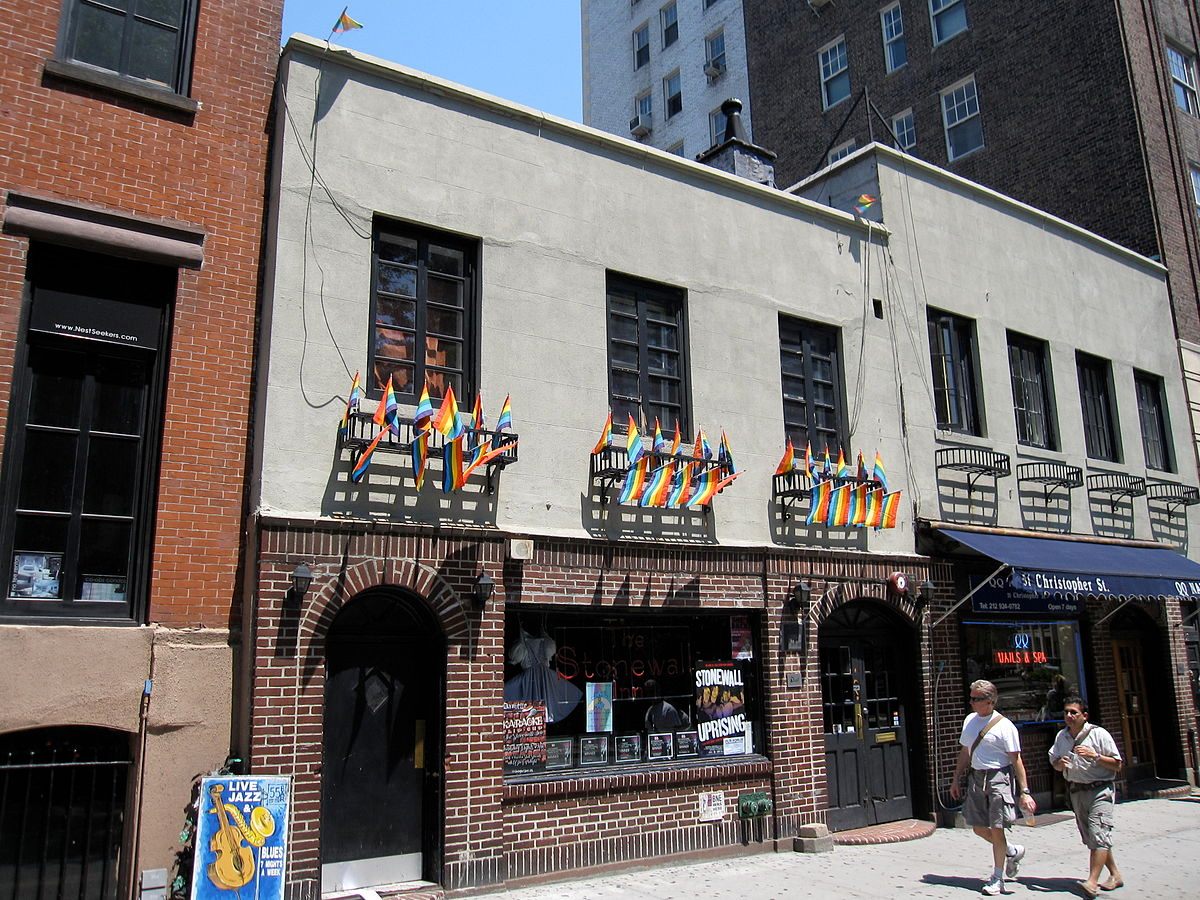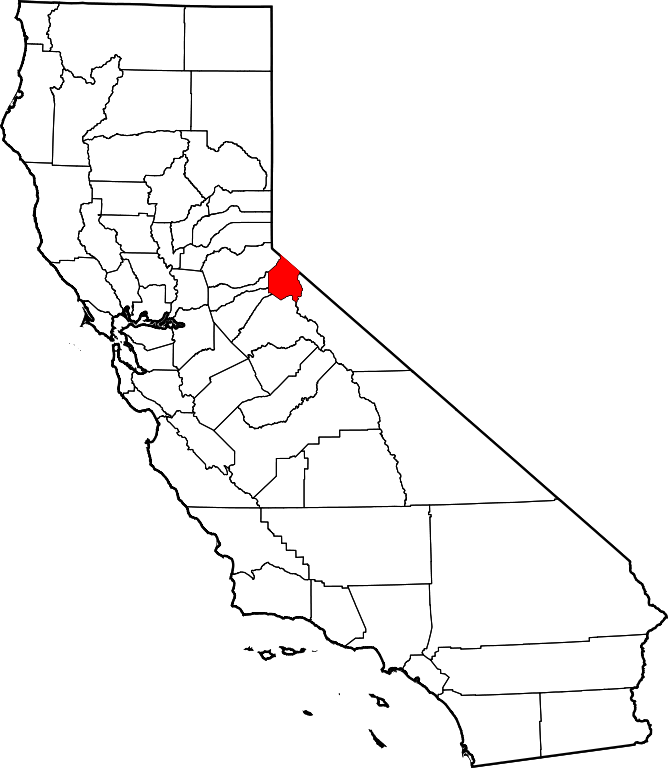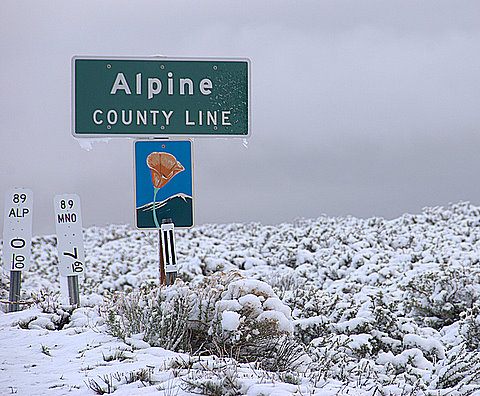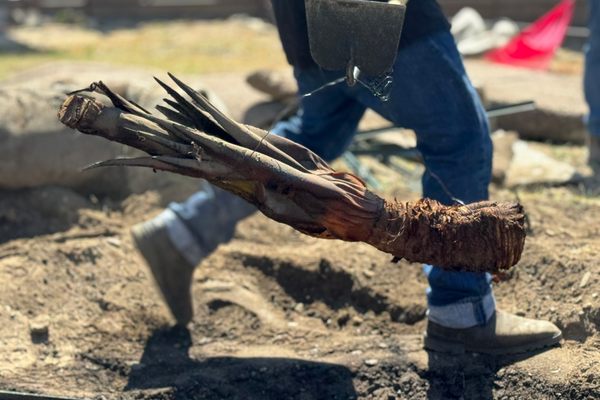The Radical Plan to Turn One California Town into a Gay Utopia
In 1970, gay rights activists tried to take over Alpine County.

The Stonewall Inn, where riots in 1969 kicked off the gay liberation movement. (Photo: Gryffindor/CC BY-SA 3.0)
In December 1969, just months after the Stonewall Riots that sparked the gay liberation movement, activist Don Jackson declared that the queer community needed a territory of its own.
To a symposium in Berkeley, California, Jackson asked his audience to “imagine a place where… there is no job discrimination, police harassment or prejudice… a place where a gay government can build the base for a flourishing gay counter-culture”—a place with a population so small that just a few hundred queer activists could move in and outvote the current residents.
This place was Alpine County, California. Located in the Sierra Nevada Mountains, Alpine County was home to an amalgamation of mountaineers, fishermen, and Washoe Native Americans—and only 384 of them were registered voters. In fact, to Jackson’s delight, the county had recently changed its residency requirements to allow newcomers to register after only 90 days.
In effect, if just 400 queer activists moved in, within three months Alpine County could become a gay utopia, complete with a gay mayor, a gay sheriff, gay judges, and a gay board of supervisors.

The location of Alpine County in California. (Photo: David Benbennick/Public Domain)
Initially, though it had its share of dedicated followers, Jackson’s plan was met with a mix of ambivalence and derision. In the preceding months, gay politics had radicalized—young LGBT Americans began rejecting the unwavering pragmatism of the 1950s and 1960s, instead adopting slogans like “Gay Power.”
One incarnation of this new activism was the Gay Liberation Front, a disparate organization with chapters in New York City, Washington D.C., San Francisco, and Los Angeles. (Jackson belonged to the Los Angeles chapter.) But even many members of the Gay Liberation Front (GLF) questioned the legitimacy of Jackson’s proposal, fearing it would only create a slum.
Among the skeptics was Morris Kight, a founder of the GLF-LA chapter, who privately scoffed at Jackson’s proposal when he heard about it in 1970. Kight’s activism focused on public agitation—for example, staging “kiss-in”s at unfriendly businesses to protest their discriminatory policies. He hoped these protests would attract media coverage so he could spread his ultimate message: he wanted everyone to know that gay people were organizing, and they were a force to be reckoned with. But when GLF demonstrations failed to grab headlines, he became frustrated—and then he remembered Don Jackson’s plan.
According to The Gay Revolution by Lillian Faderman, Kight told his trusted friends, “Alpine is freezing. It’s no place where anyone gay would want to live. But we’ll pretend to be serious.”

Snowbound Alpine County, California. (Photo: Constantine Kulikovsky/CC BY-SA 2.0)
A small protest in Los Angeles may not have made the nightly news, Kight thought, but a proposed takeover of an entire California county? That would captivate the media.
And it did: after GLF issued a two-page press release outlining their plan, a flurry of frantic news articles appeared across the country. On October 19, the St. Petersburg Times (now the Tampa Bay Times) published an article entitled “Things Aren’t Gay in Alpine—Yet,” which quoted the Chairman of the Alpine County Board of Supervisors Herbert Bruns saying, “We’re all very concerned. Naturally, we’ll do everything we can to prevent anyone taking over our county.” Meanwhile, in the same piece, Morris Kight promised that the new Alpine County would be “a mecca for gay tourists” and “straight curiosity seekers.”
“Gays’ Plan of Takeover Confirmed,” read an October 21 article in the Long Beach Independent, in which a GLF organizer, Don Kilhefner, claimed that GLF has “479 [activists] who have signed up already” to move to Alpine County and that “migration… will begin about Jan. 1.” He also stated that GLF members may attempt to take over other counties throughout the United States, adding: “Almost any state in the union has an Alpine.”
Morris Kight told another paper, the Fremont Argus, that the Alpine County takeover “would mean a gay government, a gay civil service” and “the establishment of the world’s first museum of gay arts, sciences and history, paid for with public funds.”
The controversy sparked the interest of national news outlets, too. NBC did stories on the proposed takeover on October 22 and November 13. The New York Times published a short piece on November 5. TIME magazine also covered the event. Its November 2 article opened: “The remote and all but empty county of Alpine, Calif., is a pristine wonderland of majestic peaks, verdant pine forests, and crystalline lakes.” For years, “tough mountaineers, woodsmen and fishermen… have preserved the pioneer purity of their independent existence. Now that existence stands threatened, and by as unlikely a force as could be imagined—the militant homosexuals of the Gay Liberation Front.”

Morris Kight in 2002. (Image: Henning von Berg)
On November 12, the Alpine County Board of Supervisors convened to discuss the “infiltration of ‘undesirable’ people into the county” and “to coordinate the plans and activities of all concerned agencies with regard to the proposed takeover.” The meeting was widely attended, including by representatives from NBC and LIFE magazine. At one point, the board even considered enacting emergency legislation to dissolve Alpine County should the GLF takeover occur.
For Kight, the Alpine County project proved a huge success. By grabbing national headlines, the prank changed the lives of countless LGBT Americans. Queer people in towns and cities big and small saw the news and realized, for the first time, that they were not alone, that there were happy people like them out there, and that those people were organizing for their rights—a victory for GLF. The media frenzy also helped to popularize the word “gay” as an alternative to “homosexual”—in the final months of 1970, the word appeared in the public consciousness as never before.

A Gay Liberation Front poster from 1970. (Image: Fair use)
To many GLF members, the Alpine County plan was a joke. They ironically donned “Alpine County or Bust!” buttons and carried “Come to Alpine County! The New Gay Mecca!” fliers. But, as Jacob D. Carter notes in his thesis “Gay Outlaws: The Alpine County Project Reconsidered,” the plan—led by Don Jackson—developed a dedicated following. It was especially popular among gay separatists, who devoted months to raising money, stockpiling food, and sewing blankets in preparation for winter in the Sierra Nevada.
The media attention, however, doomed the Alpine County project. The advanced warning allowed heterosexual opponents to unify against it. Jackson and GLF-LA kept pushing back the date they would begin their migration, until eventually the plan was unofficially abandoned. In the fall of 1971, the sheriff of Alpine County told The Advocate, “I think they’ve given up.” They had given up—and the activists who poured their hopes into the plan were devastated.
Kight, in this way, may have duped the public, but he also misled many of his fellow activists in what some have interpreted as a mean-spirited move.
Still, among the residents of Alpine County at least, resentments over the planned takeover do not appear to have lingered. In 2008, it became one of only a few California counties to vote against the anti-same-sex marriage measure Prop 8.









Follow us on Twitter to get the latest on the world's hidden wonders.
Like us on Facebook to get the latest on the world's hidden wonders.
Follow us on Twitter Like us on Facebook